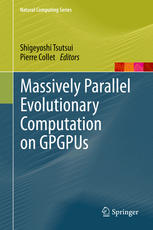

Most ebook files are in PDF format, so you can easily read them using various software such as Foxit Reader or directly on the Google Chrome browser.
Some ebook files are released by publishers in other formats such as .awz, .mobi, .epub, .fb2, etc. You may need to install specific software to read these formats on mobile/PC, such as Calibre.
Please read the tutorial at this link: https://ebookbell.com/faq
We offer FREE conversion to the popular formats you request; however, this may take some time. Therefore, right after payment, please email us, and we will try to provide the service as quickly as possible.
For some exceptional file formats or broken links (if any), please refrain from opening any disputes. Instead, email us first, and we will try to assist within a maximum of 6 hours.
EbookBell Team

4.7
66 reviewsEvolutionary algorithms (EAs) are metaheuristics that learn from natural collective behavior and are applied to solve optimization problems in domains such as scheduling, engineering, bioinformatics, and finance. Such applications demand acceptable solutions with high-speed execution using finite computational resources. Therefore, there have been many attempts to develop platforms for running parallel EAs using multicore machines, massively parallel cluster machines, or grid computing environments. Recent advances in general-purpose computing on graphics processing units (GPGPU) have opened up this possibility for parallel EAs, and this is the first book dedicated to this exciting development.
The three chapters of Part I are tutorials, representing a comprehensive introduction to the approach, explaining the characteristics of the hardware used, and presenting a representative project to develop a platform for automatic parallelization of evolutionary computing (EC) on GPGPUs. The 10 chapters in Part II focus on how to consider key EC approaches in the light of this advanced computational technique, in particular addressing generic local search, tabu search, genetic algorithms, differential evolution, swarm optimization, ant colony optimization, systolic genetic search, genetic programming, and multiobjective optimization. The 6 chapters in Part III present successful results from real-world problems in data mining, bioinformatics, drug discovery, crystallography, artificial chemistries, and sudoku.
Although the parallelism of EAs is suited to the single-instruction multiple-data (SIMD)-based GPU, there are many issues to be resolved in design and implementation, and a key feature of the contributions is the practical engineering advice offered. This book will be of value to researchers, practitioners, and graduate students in the areas of evolutionary computation and scientific computing.